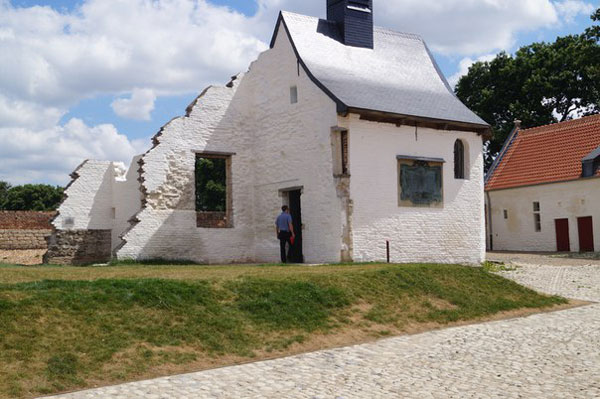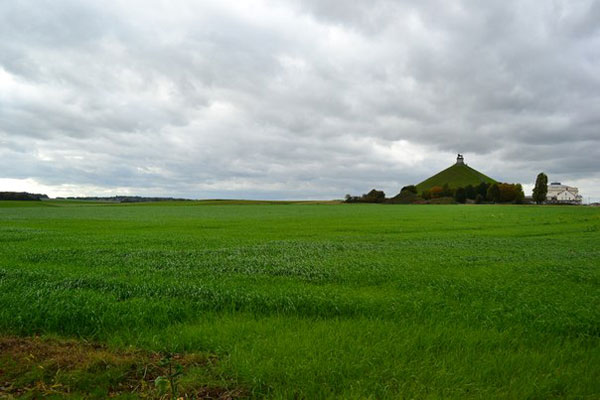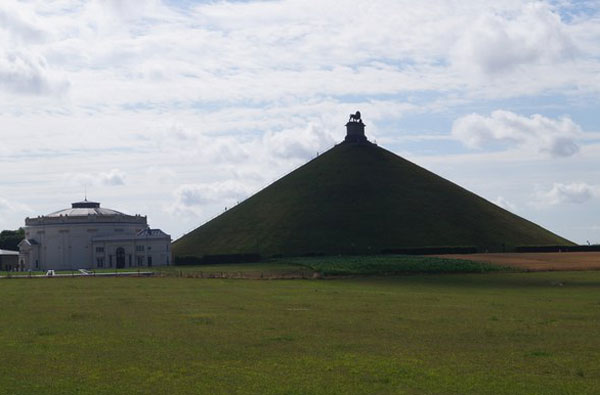Waterloo (French pronunciation: Dutch pronunciation: [ˈwaːtərloː], Walloon: Waterlô) is a Walloon municipality in the province of Walloon Brabant, Belgium, which in 2011 had a population of 29,706 and an area of 21.03 km2 (8.12 sq mi). It is north of Braine-l'Alleud, which is the site of the Battle of Waterloo, where the resurgent Napoleon was defeated for the final time in 1815. Waterloo is a multilingual town; the commune offers services in French, Dutch, and English.
Etymology
The placename is of Dutch origin. The first element is most likely water, but it should be understood locally as "wet". The second element is lo(o), an ancient word for "forest" or "clearing in a forest", coming from the Latin words lucus (forest) or lucum (clearing in a forest), or Common Germanic lauh- (Anglo-Saxon lēah), cognate with the English placename suffix -ley or independent name Leigh. The early settlement was located on a marshy clearing in the Sonian Forest.
History
This section does not cite any sources. Please help improve this section by adding citations to reliable sources. Unsourced material may be challenged and removed. (February 2015) (Learn how and when to remove this template message)
The name of Waterloo was mentioned for the first time in 1102 designating a small hamlet at the limit of a big forest (Sonian Forest) along a major road linking Brussels and Genappe, and further south the coal mines area. Waterloo was located at the crossing of the main road with a path leading to a farm (cense in Walloon). The crossing still exists: chaussée de Bruxelles with Boulevard de la Cense. Waterloo was a place where travellers and carriers of goods (mainly coal) could rest and escape the bandits at night.
Waterloo was located in the Duchy of Brabant created in 1183 with Leuven (B) as the capital city. The Duchy of Brabant extended from Luttre (B) till 's-Hertogenbosch (NL) in 1477. Brussels became the capital city of the Duchy of Brabant in 1267 and the capital city of the Burgundian Netherlands in 1430.
Waterloo started to develop during the 17th century. A royal chapel was built in 1687 in Petit-Waterloo. This chapel still exists and was extended in 1826 at the back to form today's main church of Waterloo.
Because of the new ideas following the French Revolution in 1789, the Holy Roman Emperor (who was governing present day Belgian territories) wanted to impose reforms. This was followed by a period of unrest that ended with the French invasion in 1794. The old regime (rights of the seigniors, the power of the monasteries, the church keeping official registers) was abolished.
Until 1796, Waterloo was divided into two parts (Grand-Waterloo and Petit-Waterloo) depending, respectively, of the parishes of Braine-l'Alleud (Bishopric of Namur) and of Sint-Genesius-Rode (Bishopric of Mechelen).
A new system based on municipalities was established in 1796. The municipality of Waterloo was created from Petit-Waterloo detached from Sint-Genesius-Rode and three former hamlets (Grand-Waterloo, Joli-Bois, Mont-Saint-Jean) detached from Braine-l’Alleud. In 1813, half of the hamlet of Chenois was detached from Braine-l’Alleud and became part of Waterloo. In 1824, Waterloo grew again as the areas Roussart and Sainte-Gertrude from the Sonian Forest (Foret de Soignes) became part of the municipality too. Waterloo had 1571 inhabitants in 1801 and 3202 in 1846.
In 1795, the invaded territories were divided into nine departments. Some municipalities, including Waterloo, became part of the Dyle department, which became the province of Brabant Méridional in 1815 under the Dutch rule after the defeat of Napoleon. It changed name in 1830 when Belgium became independent and became the province of Brabant for 165 years.
Battle of Waterloo
Clément-Auguste Andrieux's 1852 The Battle of Waterloo
Main article: Battle of Waterloo
The Battle of Waterloo took place near Waterloo on 18 June 1815 between the First French Empire of Napoleon Bonaparte and the Seventh Coalition (troops from Prussia, the United Kingdom, the Netherlands, Hanover, Brunswick and Nassau), under the main allied commanders, the Duke of Wellington and General von Blücher.
The strategic location of Waterloo on a paved road towards Brussels explains why the battle took place just south of Waterloo. It was important for the allies to stop Napoleon from reaching Brussels, just 17 kilometres (11 mi) away, and Waterloo was the last settlement to cross before negotiating the forest and getting to Brussels.












